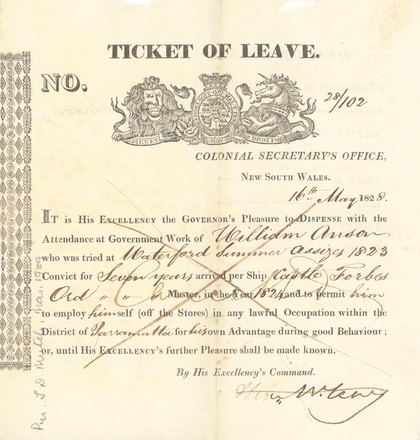Between 1788 and 1842 about 80 000
convicts were transported to New South Wales. Of these, about 85% were men and
15% were women. Almost two thirds of convicts were English (along with a small
number of Scottish and Welsh) with the Irish making up the remaining one third.
Convicts were usually given sentences of
transportation for seven, 14 yars of life. Some convicts in the 1830s received
ten-year sentences. About one quarter of the convicts were sentenced to ‘the
term of their natural lives’, and a proportion of these had reprieves from the
death sentence.
A
ticket of leave was a highly detailed document, listing the place and year the
convict was tried, the name of the ship in which he or she was transported, and
the length of the sentence. There was also a detailed physical description of
the convict, along with year and place of birth and former occupation.
British playwright Tom Taylor (1817–1880)
wrote a play titled ‘The ticket-of-leave man’ which was first produced at the
Olympic Theatre in London on 27 March 1863. The play was still being performed
one hundred years later at the Lincoln Theatre Royal, Lincoln in England in
1970.



 Back to list
Back to list